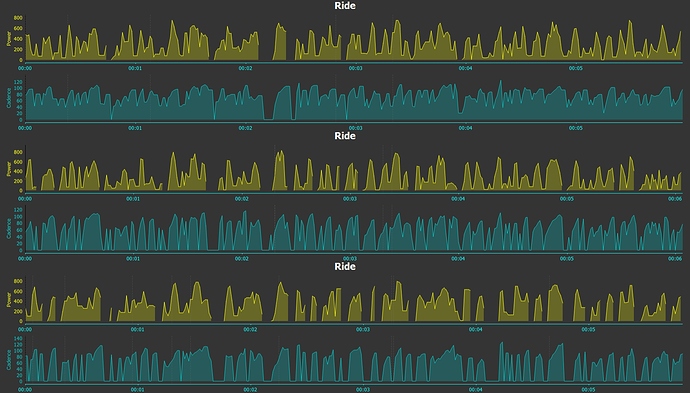From your experience, how reliably do the various power meter models report freewheeling/coasting events?
After the severe connectivity (and other) issues with my Rotor INspider, I switched to a power2max NG. This has no connectivity issues, however, it seem to have a hard time picking up coasting events immediately, while the INspider was rather reliably reporting these as 0 W / 0 rpm. The p2m rather reports close to 0 power values (20~50) and non-zero cadence in most of such cases unless the coasting phase is really long. Of course, I am not talking about the 3 s avg values on the display of my watch but the values in the fit/tcx files. Now I wonder if this is related to the p2m’s built-in auto-zero function (which can be disabled, but I haven’t had the chance yet to validate this hypothesis) or if this is a more general “issue” also with other power meters on the market.
Thanks,
Frank
Hi @Frank_H_VCP_ChezVelo
Most power meters do this, their own firmware does the "filtering’ and then sends the data to you, I often look at RAW Data to observe any anomaly’s in the data, and all of them vary to a some degree of 4-25w and not a true zero as your foot pressure on the cranks can actually be measured as you coast.
My Assioma’s are stable at 0 Watts if I do a long descend, but if I do shift position or alternate L/R for cornering (hairpins), there will be some power recorded, which makes sense.
As long I keep my legs still, power reads 0.
For undulating terrain, this is more difficult, as you will surely still push some Watts while coasting between bumps.
Interesting. I get that the system may measure some torque/force. However, the accelerometer should detect that the cadence is actually zero. Hence, the power should be zero too, since at 0 rpm there is no work done. Seems that Rotor did actually a pretty good job in this respect. Will check if the something changes when I disable the auto-zero function of the p2m.
As long as there’s no RPM, the power is zero on the descend, That’s why I included RPM in the chart…
Like I said, coming out of a hairpin or overtaking a car, there’s some movement going on.
I think that stretch was descending the quite deserted Giau, later in the day…
Here some data from the segment I use as “benchmark”.
It’s a crazy ~2 km lap with about 90(!) turns.
(I can share a video, if you are interested.)
3 laps with Rotor INspider:
1 lap with p2m NG:
That’s way more complicated, like what I meant with undulating terrain.
I mean, you are actually moving your pedals, right, or is it all bogus data?
If I shift from left to right, so just half a rotation, depending on the curve I’m approaching, no power will be registered. Actually, that half turn is also no registered as RPM either…
In about half of these tight turns I actually stop pedaling.
And when looking at the three laps recorded with the INspider,
you will realize that these 0 rpm events are actually correlating,
while most of these coasting events are absent in the p2m NG data.
Some more data from my two power meters (via ANT+) recording the same segment.
At the top: the power2max NG with default settings,
in the middle: the same with additional metrics and auto-zero disabled,
at the bottom: the Rotor INspider.
The INspider data are probably closest to reality,
while the p2m with default setting is clearly far off,
especially the cadence data, as shown before.
However, the quality dramatically improves after switching of
all the “extras”. It’s still not as good as the INspider.
I am wondering if the chip built in the p2m unit is simply
to slow to deal with very frequent changes in cadence and load.
BTW, today I used even two different watches to rule out
any data transmission issue. The recorded data were identical
(apart from the GPS coordinates of course.)
And I also looked on the display when I stopped pedaling
(if possible). There was always a little delay, but for
the majority of coasting events, a 0 popped up in the cadence field.
And I am still convinced that this should result in 0 W too.
However, this happens in less than 50 % of the cases.
So there is in fact some averaging over more than 1 s happening
within both devices. I would love to test SRM too,
but I am done spending money on power meters.





